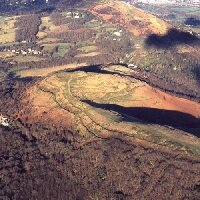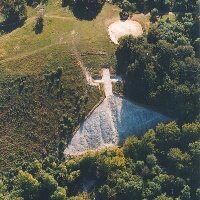AONBs and the historic environment


Introduction
Our Areas of Outstanding Natural Beauty (AONBs) are among the most attractive and fascinating landscapes of England and Wales. Their beauty is the result of many centuries of human influence on the countryside and the daily interaction of people with nature. The history of these outstanding landscapes is therefore fundamental to their present-day appearance and to the importance which society accords them. If these essential qualities are to be retained in the future, as the countryside continues to evolve, it is vital that the heritage of AONBs is understood and valued by those charged with their care and management, and is enjoyed and celebrated by their local communities.
This leaflet was published in March 2005 to mark the signing of the first joint accord on the historic environment between English Heritage and Cadw – the national heritage agencies of England and Wales – and the National Association for Areas of Outstanding Natural Beauty (NAAONB).
AONBs background information
Areas of Outstanding Natural Beauty were first introduced by the National Parks and Access to the Countryside Act 1949 in order to conserve the natural beauty of key landscapes in England and Wales. Currently there are 36 AONBs in England, four in Wales and one shared between the two countries. Varying greatly in size and dramatically in character, they cover a combined area of 21,435km2: 13.9 % of the total land area of both countries.
AONBs and the Historic Environment
While the title of Areas of Oustanding Natural Beauty stresses their naturalness, it is important to recognise that these are actually cultural landscapes, created by generations of farmers, foresters, estate owners and industrialists working with the grain of nature to shape and re-shape the lie of the land. This historic dimension is fundamental to the character of today’s AONB landscapes. It underpins their distinctiveness and sense-of-place and the aesthetic and emotional response they elicit in both visitors and residents alike. This heritage is of fundamental importance to local economies, generating inward investment, facilitating local branding and attracting numerous visitors from home and abroad. It is an asset of incalculable value.
Because of this rich historic inheritance, AONBs in England and Wales are a major repository of our most important historic sites. In England and Wales, AONBs contain nearly 50,000 listed buildings, nearly 5,000 nationally important ancient monuments and over 300 designated historic parks and gardens. Eight AONBs also include parts of internationally important World Heritage Sites.
AONBs are also living and working landscapes. Caring for their exceptional heritage does not mean preserving these places ‘in aspic’. Indeed, it is the evidence of archaeology that shows us how these landscapes have changed – often continually and radically – over many centuries. Further evolution is inevitable as populations shift, our climate changes and agriculture responds to global pressures.
Caring for the historic environment is therefore a matter of working with change and managing it to ensure we retain what society most values. AONB management plans, and the integrated long-term approach to land management which they promote, will be of fundamental importance in promoting a common vision for the future and delivering enhanced management of the heritage in the face of pressure for change. English Heritage and Cadw will work with AONBs, wherever possible, to help them deliver their plan objectives.
What's New?
-
The National Heritage List for England is now live on the English Heritage website.
-
Welcome to the HER21 page. This page offers access to the full suite of HER21 project reports.
